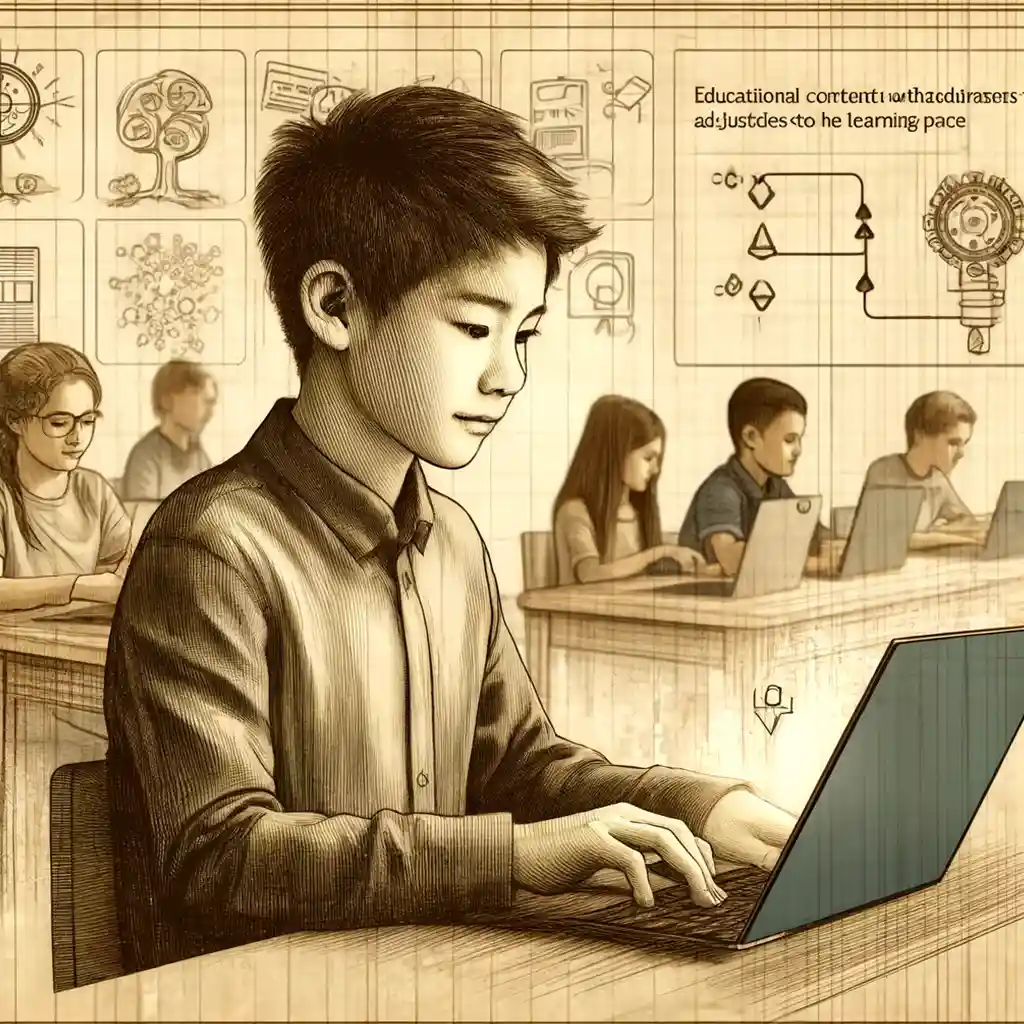The landscape of education continues to evolve, largely pushed by responses to equity concerns and technological advancements. Below we will focus on the ten most important education trends of the year with a focus on how these innovations and changes shape how students learn. From inclusive classrooms to the rise of artificial intelligence, these trends offer some insight into how education is becoming more personalized through technology.
Education Trend #1: Inclusive Classrooms and Equity
The Push for Educational Equity
Over the past few years, there has been a significant trend in education towards inclusivity. The need for inclusive classrooms – ones that promote equity among all students – has become essential. Efforts to retain and re-train experienced teachers in high-poverty schools have begun. Moreover, schools have bolstered support staff to create a learning environment for all students to thrive.
Schools are investing in resources to ensure that students, regardless of their backgrounds, receive a quality education. Hopefully, state and federal funding formulas will eventually provide more capital to help level the playing field for communities suffering from poverty.
Education Trend #2: Individualized Learning

Tailoring Education to Individual Needs
This trend has taken a long time to develop. Those who have been in the teaching game for a long time might remember when boards pushed Howard Gardner’s multiple intelligence theory into the classroom. Back then, we were asked to develop different types of assessments based on multiple intelligences.
That eventually turned into differentiated instruction, which is still trending but isn’t very new. In the differentiated model, we often offer choice or tiered work that students find challenging and meaningful. However, with the recent creation of new digital tools, the differentiated model is turning into individualized instruction.
I suspect that this trend will continue, and we may even see adaptive learning platforms that are driven by AI in the classroom before long. I wouldn’t be surprised if courses and curricula are entirely individualized before long.
Education Trend #3: More Homeschooling
Not surprisingly, there was a drastic spike in homeschooling after 2019, according to the National Education Research Institute. Prior to the COVID-19 pandemic, the number of homeschooled students typically grew around 5% per year. In the spring of 2019, approximately 2.5 million students were homeschooled. This number jumped to over 3.5 million in 2020. The homeschooling trend has continued to grow, with current estimates sitting around the 4.5 million mark.
With the wide availability of online learning platforms, it isn’t a surprise to see the homeschooling trend continue. With so many online resources for parents to use at home, it is easy to offer a diverse and effective curriculum at home.
Education Trend #4: Artificial Intelligence

AI and Academic Dishonesty
From individualized lesson planning to leveled reading material to automating administrative tasks, AI is changing the classroom. Of course, it’s great to have AI write most of your report card comments – but this isn’t what teachers are talking about when it comes to AI in the classroom.
Most of us are talking about how students are using artificial intelligence as a tool for academic dishonesty. The number of AI-written essays is staggering. Most of us haven’t been given clear instructions by our boards, making this even more frustrating. There isn’t any clear route ahead for AI cheating, especially since generative AI is in its infancy and will only continue to improve. While I’m a huge fan of AI, this is a sore spot!
Education Trend #5: Extended Reality
Extended Reality in Higher Education
Using Mixed reality (MR), augmented reality (AR), and virtual reality (VR) has become an important trend in post-secondary schools and some high schools. These technologies provide an immersive and memorable learning experience. They can simulate real-world experiences and help students visualize complex concepts. The relatively low cost makes XR an attractive tool in education. As more content is developed, expect to see more XR in all classrooms.
Education Trend #6: Alternative Assessments
Rethinking Evaluation
This is not a novel concept. Teachers have been providing alternative assessments for quite a long time. The trend here is that many administrators are now putting the practice into policy. The move away from traditional tests and essays comes as no surprise to those implementing individualized learning efforts in their classroom.
Instead, we are seeing far more learning portfolios, feedback loops, and continuous assessments that provide a more holistic view of a student’s progress. We will probably start seeing more practical and field assessments, where possible.
If upper administrators start taking this very seriously, we may start to see standardized testing fall by the way-side one day!
Education Trend #7: Soft Skills

A Renewed Emphasis on Soft Skills
Soft skills, such as teamwork, communication, leadership, and problem-solving, are valuable in the workplace. Especially with the world’s knowledge at one’s fingertips, the need to have a head full of facts isn’t as important as it once was. Being able to communicate and use those facts to one’s advantage are far more important skills.
Even some curriculum documents now include guidelines for teaching soft skills. Is the shift a reflection of students demonstrating poorer soft skills in post-secondary and the workplace? Or is it that there is a greater demand for soft skills in the 21C model of education? Either way, it’s useful.
Education Trend #8: Microschools
The Rise of Microschools
If you haven’t heard of a microschool yet, rest assured—you aren’t alone. These are schools with small enrollments, usually under 100 students in the entire school. The types of curricula offered in these schools vary. Some run Montessori, others focus on an international baccalaureate, while others provide an individualized, progressive curriculum.
These institutions provide a tailored, student-centered learning experience and often incorporate progressive teaching methodologies and technologies. This appeals to families looking for alternatives to conventional educational models and can afford the private schooling price tag.
Education Trend #9: Teacher Burnout
Addressing Teacher Burnout
According to Devlin Peck, 44% of K-12 teachers are feeling consistent burnout. We are experiencing increased responsibilities with no additional compensation. Many schools are short-staffed, and teachers are forced to pick up the slack.
As teachers continue to burn out and leave the profession or go on stress leave, boards will have to figure out something to keep teachers in the classroom. By improving workplace conditions, schools can be a better place for teachers and students.
Education Trend #10: Mental Health Education
Focusing on Students' Well-being
Since the pandemic, the mental health of students has received increased attention. Over the past few years, anxiety in the classroom has become more evident, and school boards have started to respond. In several districts, boards have developed and are rolling out mental health curricula for classes. The curriculum goes beyond traditional units in health classes and is working its way into core subjects.
Schools are also providing more in-school counseling and support. It seems to me that the more we talk about mental health, the less healthy we get. But that’s an unpopular opinion right now!
As these trends continue to develop, they will reshape education. I believe most of these trends are a move in the right direction, especially when it comes to inclusivity and individualized learning. Regardless of what anyone thinks, our education systems are in for some big changes in the not-too-distant future.


